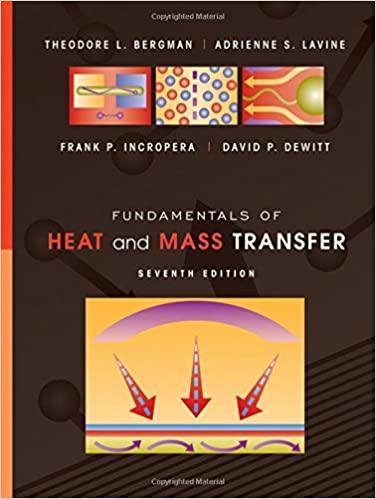A constant-property, one-dimensional plane wall of width 2L, at an initial uniform temperature T i , is
Question:
A constant-property, one-dimensional plane wall of width 2L, at an initial uniform temperature Ti, is heated convectively (both surfaces) with an ambient fluid at T∞ = T∞ ,1, h = h1. At a later instant in time, t = t1, heating is curtailed, and convective cooling is initiated. Cooling conditions are characterized by T∞ = T∞,2 = Ti, h = h2.
(a) Write the heat equation as well as the initial and boundary conditions in their dimensionless form for the heating phase (Phase 1). Express the equations in terms of the dimensionless quantities θ*, x*, Bi1, and Fo, where Bi1 is expressed in terms of h1.
(b) Write the heat equation as well as the initial and boundary conditions in their dimensionless form for the cooling phase (Phase 2). Express the equations in terms of the dimensionless quantities θ*, x*, Bi2, Fo1, and Fo where Fo1 is the dimensionless time associated with t1, and Bi2 is expressed in terms of h2. To be consistent with part (a), express the dimensionless temperature in terms of T∞ = T∞,1.
(c) Consider a case for which Bi1 = 10, Bi2 = 1, and Fo1 = 0.1. Using a finite-difference method with Δx* = 0.1 and ΔFo = 0.001, determine the transient thermal response of the surface (x* = 1), midplane (x* = 0), and quarter-plane (x* = 0.5) of the slab. Plot these three dimensionless temperatures as a function of dimensionless time over the range 0 ≤ Fo ≤ 0.5.
(d) Determine the minimum dimensionless temperature at the midplane of the wall, and the dimensionless time at which this minimum temperature is achieved.
Step by Step Answer:

Fundamentals Of Heat And Mass Transfer
ISBN: 9780470501979
7th Edition
Authors: Theodore L. Bergman, Adrienne S. Lavine, Frank P. Incropera, David P. DeWitt





